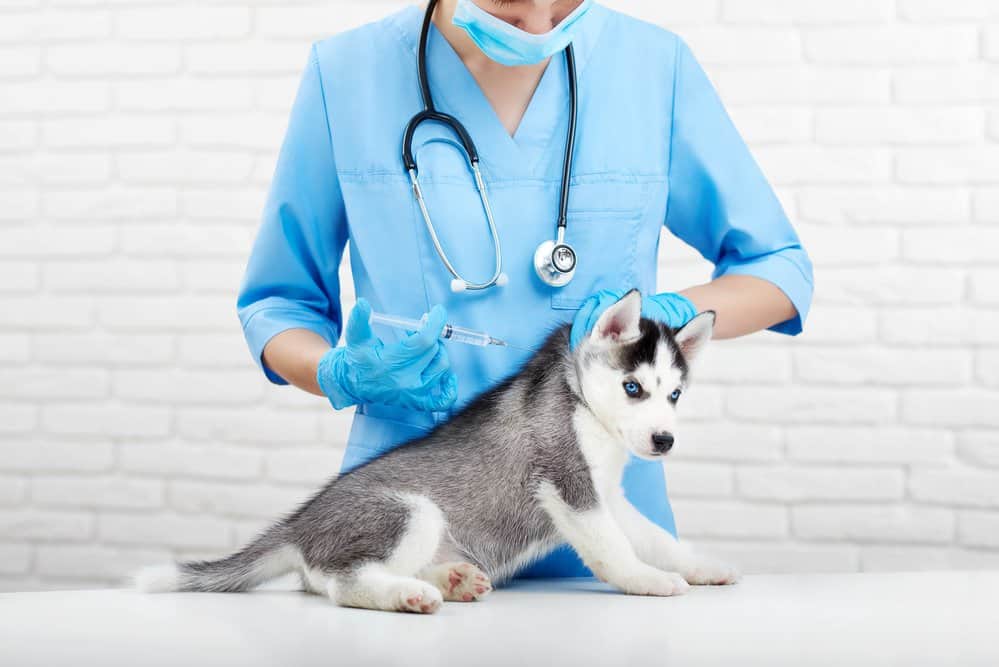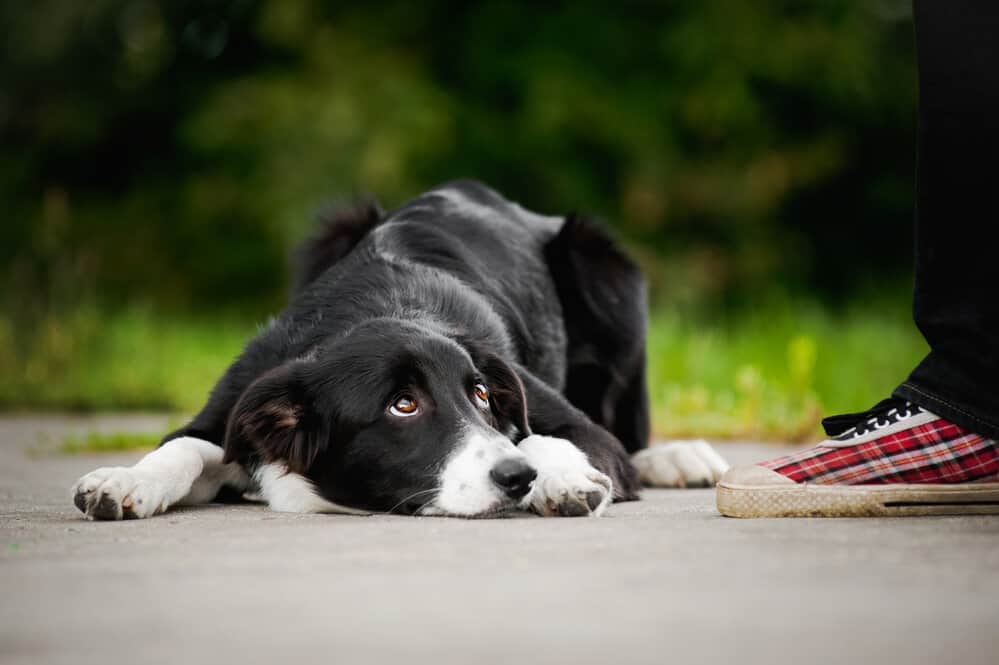Your 12-week-old puppy can safely walk for 15 minutes every day around your house or in your backyard. However, this period of time can vary from one puppy to another.
Your puppy is now turning 12 weeks old, so you need to start making changes in his life. The changes will include different feeding habits, activities, and exercise schedules.
Your puppy has a whole new world to explore, which will include hundreds of hours of walking. This is why you have to understand your dog’s physical capabilities at such a young age.
This begs the question: how far can a 12-week-old puppy walk? Further, are there any aspects that you need to be mindful of when walking your young pooch?
Let’s find out!
Helpful Dog Training Resource:
For help with training your dog, you should take a look at The Online Dog Trainer by Doggy Dan. Doggy Dan is an expert Dog Trainer based in New Zealand. His online resource contains Hundreds of Excellent Dog Training Videos that will take you step-by-step through the process of developing a healthy, happy well-behaved dog.
Things to Consider Before Walking Your Puppy
Walking a puppy may look like an easy and simple activity; you just go outside and walk, right? There’s no rocket science here, or is there?
To safely walk your puppy outside, you have to pay close attention to things like vaccination, breed, and age. Additionally, you must take into account where and when to walk your puppy.
Vaccination

At the age of 6 to 8 weeks, puppies get a series of vaccinations to protect them from different life-threatening illnesses.
Some vaccinations are obligated by law, which explains why they’re incredibly important before your puppy starts discovering the outside world.
Exposing your pup to unvaccinated dogs can be dangerous. Not to mention that the places that might have had unvaccinated dogs walking around can also be unsafe to walk your puppy.
So, as the responsible owner you are, you must keep tabs on your puppy’s vaccinations.
The best way to do that is by always checking with your vet to know what vaccinations the puppy got and what is yet to be received.
Until your vet says it's safe to allow your puppy to walk outside, you can walk your puppy around the house or let them run around in your backyard.
Breed
Some dog breeds are more subject to health issues than others. For example, a larger breed dog can get joint problems from excessive walking or exercise.
Although larger breed dogs can grow in size quickly, they mature slowly, which can make the dog prone to messing up its growth plates’ development.
Growth plates are soft tissues found at the end of your dog’s long bones. Their job is to multiply in cells to increase the bone’s density and length as the puppy matures.
Growth plates can take around 18 months to fully mature and become a stable part of the bone. In larger dog breeds, growth plates can take more than 18 months to close.
This is why you shouldn’t be tempted to hike with your Great Dane, just because of how big they become.
Age

Age is an aspect you can't turn a blind eye to. Puppies at a very young age shouldn’t walk for too long, as they still haven’t developed enough endurance.
You’ve probably come across the general rule where you should walk your puppy only 5 minutes for every month of age. This means a 12-week-old puppy can walk for 15 minutes.
Although it may be okay to do that, you shouldn’t just follow this rule as is because dog breeds vary in terms of the dog’s physical fitness and overall ability to exercise.
This is why you have to consider your puppy’s breed in parallel to the 5-minute rule. Doing so will help you avoid overexerting your puppy or them not getting enough exercise.
How Often Should You Walk a 12-Weeks Old Puppy?
As we mentioned before, a 15-minute slow walk every day will give your young pup a healthy body and enough entertainment. If your puppy is more of an energetic and active breed, you can increase their walking time to 30 minutes a day.
However, it would be ideal to start with 15 minutes and slowly make your way up to 30 minutes. By the time your puppy is comfortable with a 30-minute walk, you can start splitting the walking sessions into 15 minutes in the morning and 15-minutes in the afternoon.
Doing so will ensure your puppy gets some resting time and get the puppy excited for his next exercise. Additionally, this allows your puppy to experience different day times, which adds up to your puppy’s journey of world exploration.
When to Stop Walking Your Puppy
With great journeys comes risks, and with risks lies your role of protecting your puppy. Always pay attention to your puppy’s body language.

Some of the signs you have to look for are:
- Slowing down
- Panting
- Feeling exhausted
- Lying down
- Whining
If you notice these signs, it means your puppy has walked long enough and is now tired. Never ignore these signals and end the walking session immediately.
Ignoring such signals can lead to serious injuries and, in extreme cases, death.
Helpful Dog Health Resource:
Note: Our Health is #1 Priority. It should be no different for your dog. But you need to help him. The Ultimate Guide to Dog Health is the answer. This handy guide will help you recognize the symptoms of the health problems above. Get the knowledge to stay ahead of these terrible issues that can rob your lovely dog from vigor and life. Help your friend make it to 14 yrs+ without pain and suffering.
Signs Your Puppy Is Getting Excessive Exercise
Your young dog’s health can easily deteriorate if you don't pay enough attention to the following signs:
Wear and Tear of Paws
Paw injuries are very painful, but for some dogs, pain can be less important than playing time. In other words, they’d prefer to continue playing than to let the pain stop their fun.
This is where you have to take action by inspecting your puppy’s paws after every walk. Look for any injuries or tears at the puppy’s paws and take action accordingly.
Neglecting paw injuries can lead to infection, pus, or swelling.
It’s best to consult your vet in case you notice anything odd about your puppy.
Sore Muscles
Have you ever experienced that sore feeling in your legs after a vigorous leg day at the gym? This happens to dogs as well.
You may notice your puppy struggling to get up or walk the following day if their muscles are sore.
This is a big indicator that your puppy had an excessive walk the previous day, which means you should decrease the walking period and maybe skip the current walking session.
Joint Injury
Over-exercising can cause sprain and strain in your puppy’s joints. This includes toe, elbow, and wrist joints.
Also, some breeds can be subject to a higher risk of joint injuries than others. This includes any dog breed that’s low to the ground and long.
Back injuries can also follow up joint injuries, which is why such signals are very important to notice.

Paul has been creating content for the dog niche for many years. The information he shares comes his first hand experience growing up in dog lovers household and then owning multiple dog breeds of his own as an adult. Paul enjoys doing the hard research to collect, analyze and present our dogtemperament.com readers with the best answers to their questions.